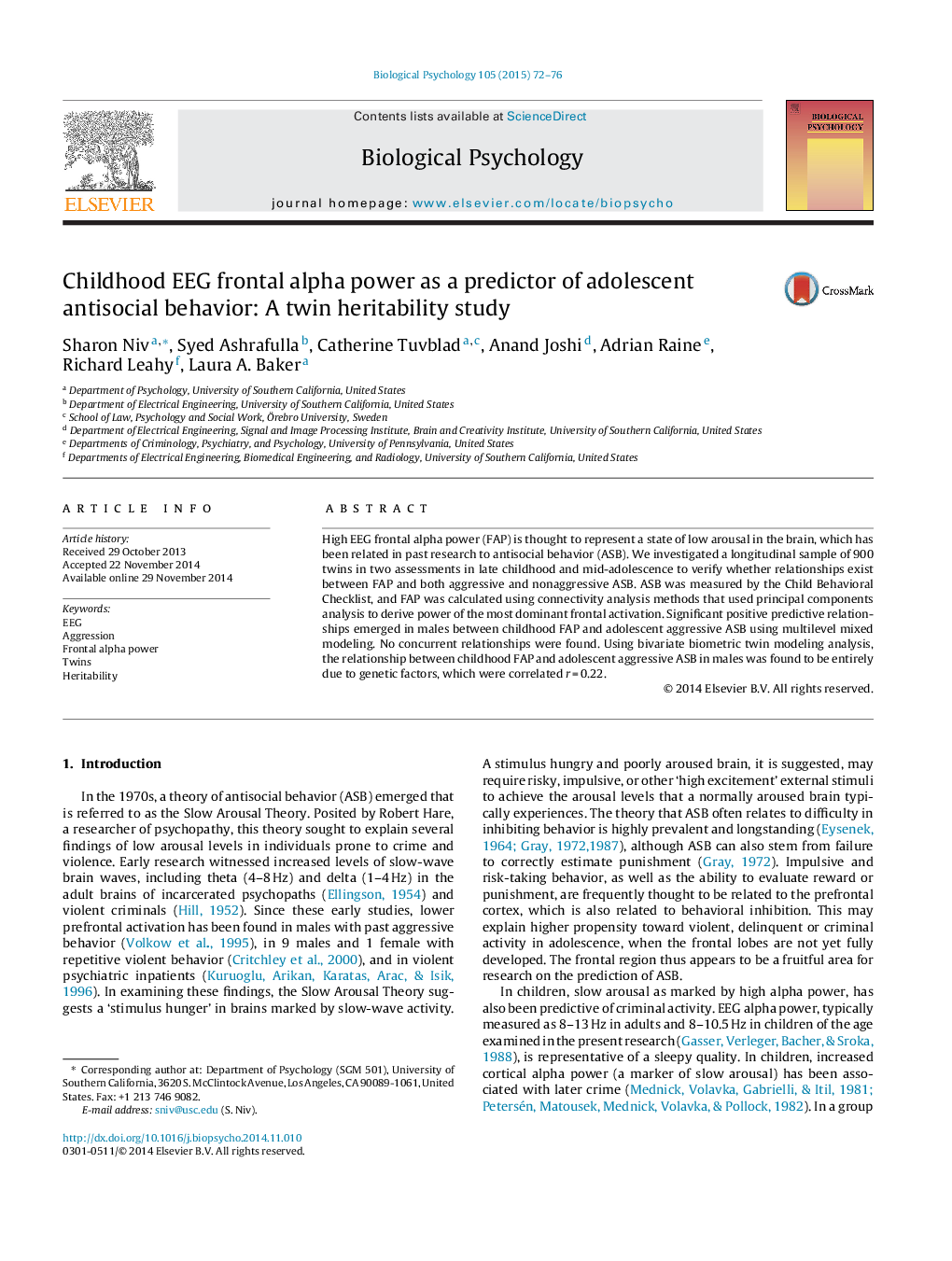| کد مقاله | کد نشریه | سال انتشار | مقاله انگلیسی | نسخه تمام متن |
|---|---|---|---|---|
| 920873 | 1473868 | 2015 | 5 صفحه PDF | دانلود رایگان |

• A significant relationship emerged between frontal alpha power and aggressive behavior in males.
• This relationship was not concurrent but predictive (childhood EEG and adolescent aggression).
• This relationship was explained entirely by genetic overlap.
• Alpha power and aggression showed influence of genetics and nonshared environment.
• No significant relationships emerged in females.
High EEG frontal alpha power (FAP) is thought to represent a state of low arousal in the brain, which has been related in past research to antisocial behavior (ASB). We investigated a longitudinal sample of 900 twins in two assessments in late childhood and mid-adolescence to verify whether relationships exist between FAP and both aggressive and nonaggressive ASB. ASB was measured by the Child Behavioral Checklist, and FAP was calculated using connectivity analysis methods that used principal components analysis to derive power of the most dominant frontal activation. Significant positive predictive relationships emerged in males between childhood FAP and adolescent aggressive ASB using multilevel mixed modeling. No concurrent relationships were found. Using bivariate biometric twin modeling analysis, the relationship between childhood FAP and adolescent aggressive ASB in males was found to be entirely due to genetic factors, which were correlated r = 0.22.
Journal: Biological Psychology - Volume 105, February 2015, Pages 72–76